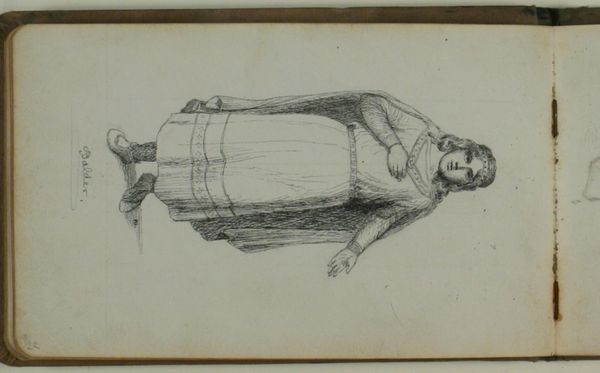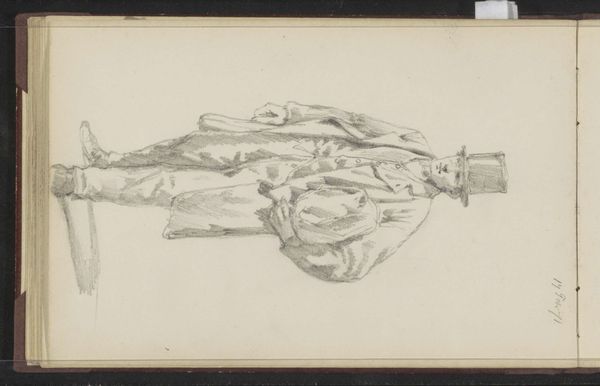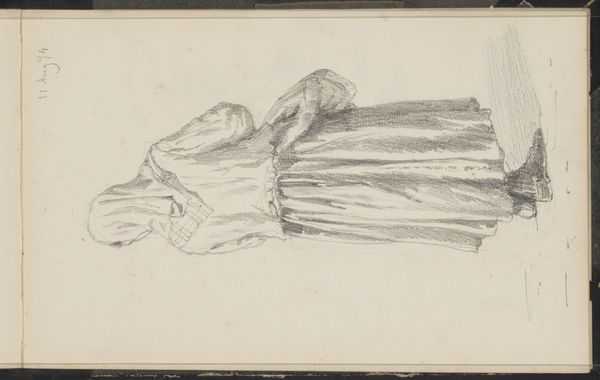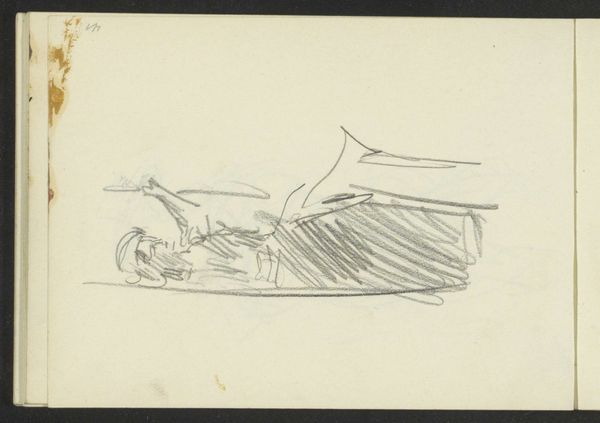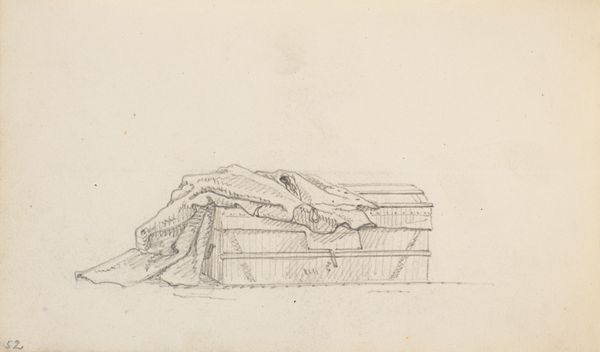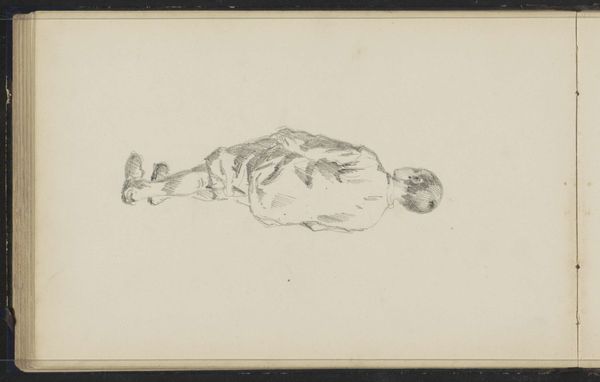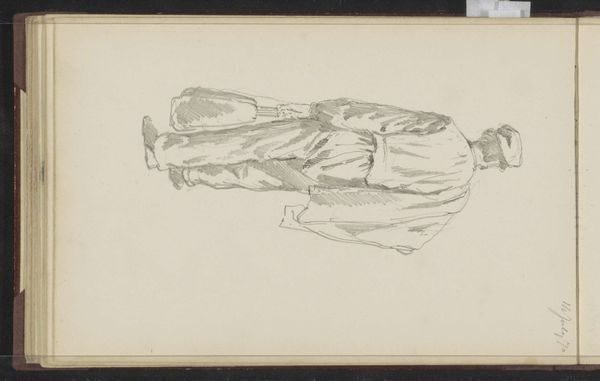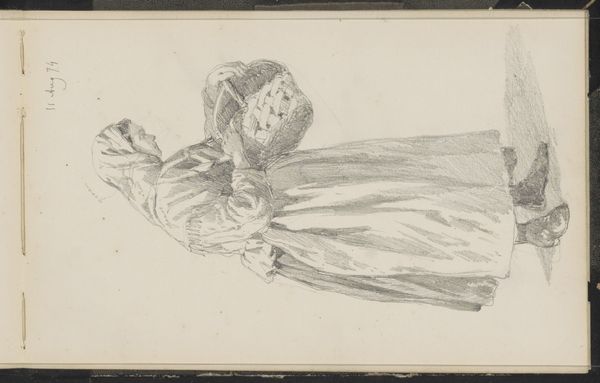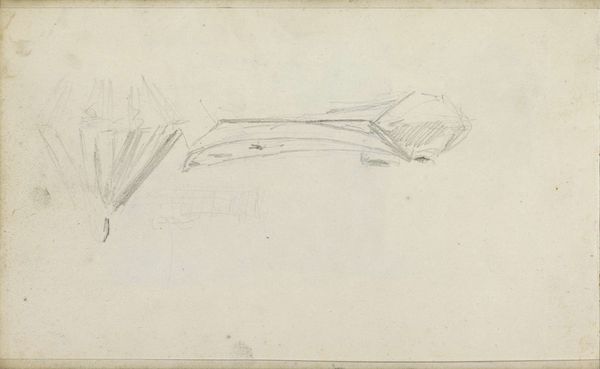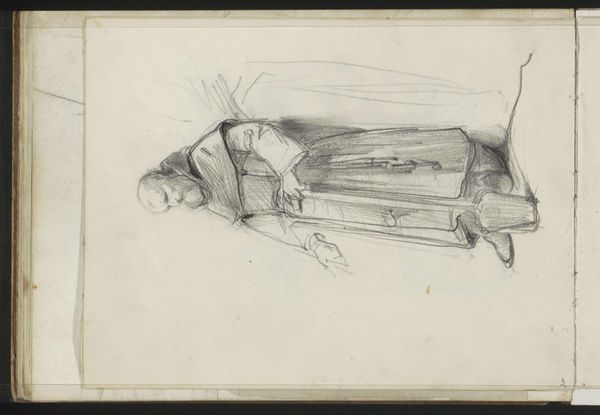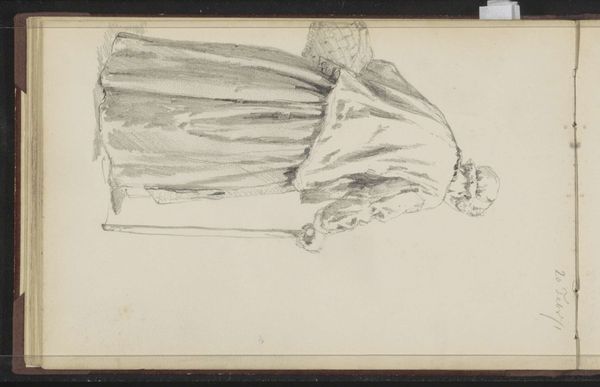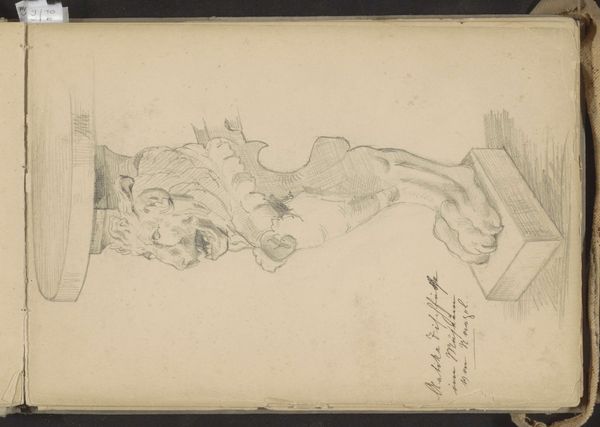
drawing, pencil
#
portrait
#
drawing
#
classical-realism
#
pencil
Dimensions: height 231 mm, width 325 mm
Copyright: Rijks Museum: Open Domain
Curator: This work is a pencil drawing by Jacopo Bernardi called “Grafmonument van Jan II van Frankrijk," placing it between 1818 and 1848. What is your initial impression? Editor: A stark kind of quiet. It looks like a hushed marble figure, peacefully resting... or maybe perpetually waiting? The artist captures the texture so precisely, though— you can almost feel the coolness of the stone. Curator: The artist utilizes a classical-realist style. Given the funerary subject matter, that artistic decision feels very appropriate. Looking closely at the draftsmanship here, the choice of medium really enhances its qualities of stillness and introspection. Pencil allows such a range of gradations... Editor: True. You know, there's also something so inherently human about seeing a drawing. You sense the hand of the artist so clearly. Was this a study for something larger, maybe? The rendering of drapery is especially fascinating. I wonder what fabrics it attempts to convey and their original colors? Curator: That is difficult to ascertain, though one can presume Jacopo Bernardi carefully considered the selection of graphite as a readily accessible material capable of replicating the play of light on sculpted stone, indicative of economic decisions affecting artistic practice during this era. Pencil drawings allowed for replication without needing highly valuable media such as oils. Editor: Hmmm, a bit cold, no? Think of the countless hours the artist put in capturing the subject's essence! It’s as though he or she has momentarily escaped their mortality by creating their own world—with textures you can almost feel—on paper. Curator: A drawing like this one illustrates so much of art production beyond sheer visual representation; we confront artistic labor and materiality. Editor: Well, I certainly find this more inspiring than some flashy painting. I mean, there's beauty here. A humble monumentality! It nudges you to remember, you know? Curator: It serves as a poignant reminder of art’s connection to larger socioeconomic patterns of consumption, which both shapes and is shaped by them in turn. Editor: Indeed. Food for thought!
Comments
No comments
Be the first to comment and join the conversation on the ultimate creative platform.


